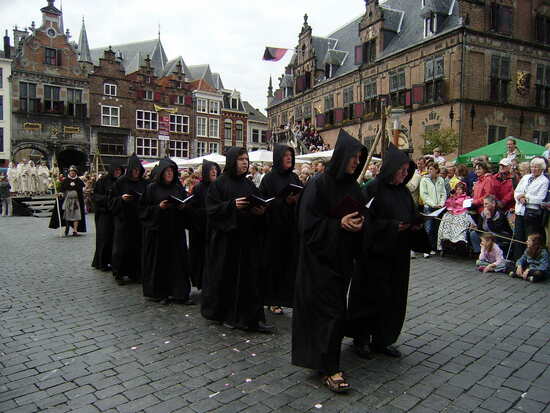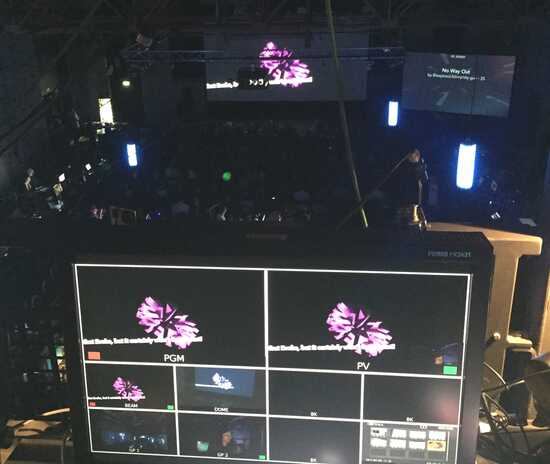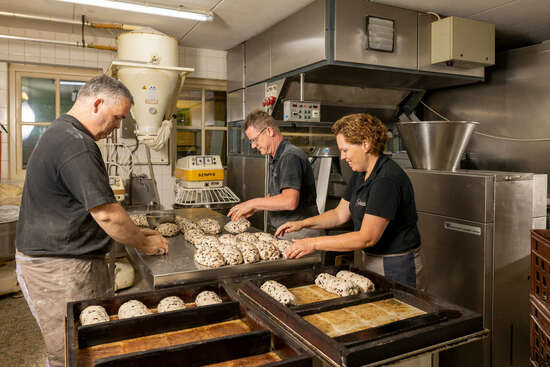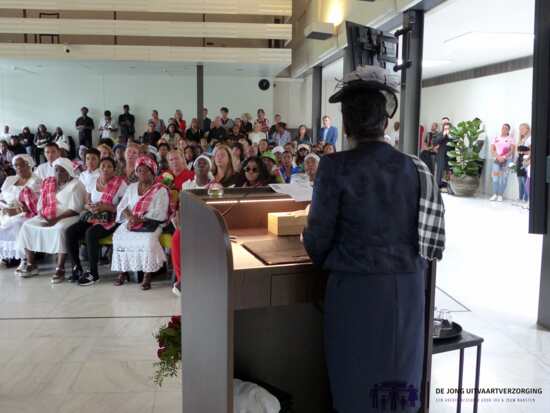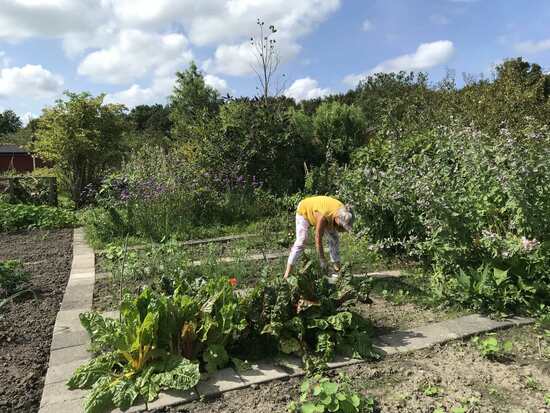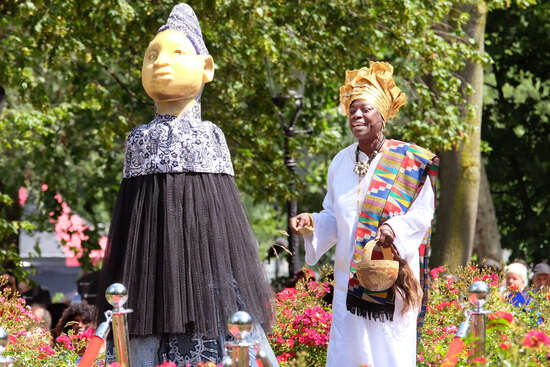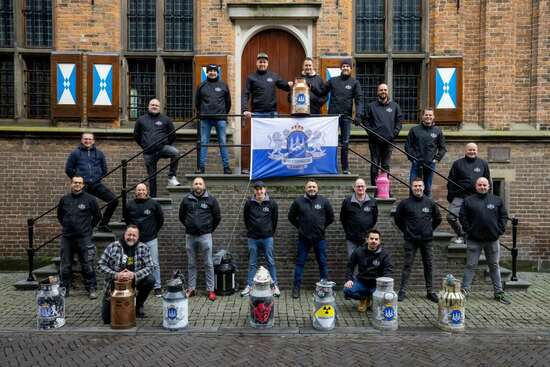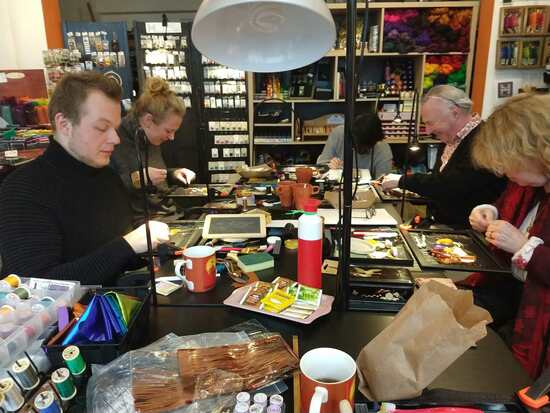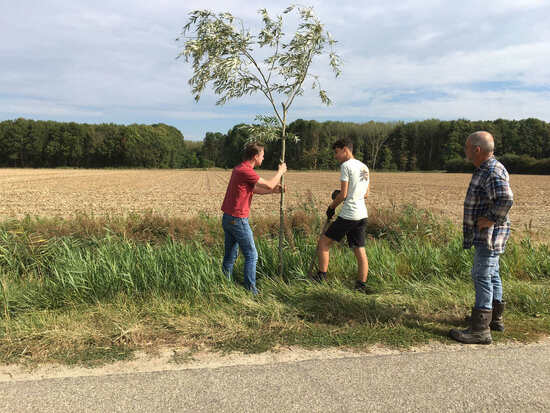After these new inscriptions, the Inventory of Intangible Heritage Netherlands contains 215 elements of intangible heritage, including crafts, festivals and social practices. Inclusion in the Inventory is a means to help practitioners keep their intangible heritage alive. By being inscribed in the Inventory, communities show that they are working to safeguard their intangible heritage and work towards its visibility.
Gregorian chants, silence and emotion by Karolus Magnus
Gregorian chants are sung texts characterised by unison and are usually performed without instrumental accompaniment. The chants have a free rhythm. The Gregorian choir Karolus Magnus from Nijmegen, the submitter of this recitation, sings Gregorian chants in churches, but also outside the liturgy. By seeking new meaning for the repertoire, they thereby contribute to the dynamism the heritage. For instance, they sing at the fever tree at the Walrick Chapel in Overasselt and have given performances where they have sung songs in the context of the war in Ukraine.
Demoscene
In the demoscene, practitioners create live all kinds of short animated films that may or may not be accompanied by music. The productions are made and shown to each other during so-called demo parties, where the productions, based on predefined criteria, are judged. The demo scene stems from the early days of computer games and programmes and was originally based on cracking manufacturers' security codes. Illegal hacking is now no longer an issue. The demo scene is a loose community, with no clear hierarchy.
Twente Krentenwegge
The nomination of the Twente krentenwegge covers both the artisanal preparation of the krentenwegge and the traditions that go with it. The nomination was made by Schabbink bakery in Saasveld, one of the last bakers still baking the krentenwegge in the traditional manner. Part of the intended safeguarding includes involving the other artisan bakers in Twente in the intangible heritage. The Twente krentenwegge plays an important role in social life. In addition, the krentenwegge is a symbol of significance in Twente's cultural, tourist and government sectors.
Mourning and healing rituals of the Ndyuka
The Ndyuka are a Maroon community. The farewell rituals begin after the death of a loved one and continue until the end of the mourning period. As some of these rituals can originally last for six months, they have been adapted to the situation here for practice in the Netherlands. The farewell rituals of the Ndyuka were nominated by the Ma-Jong Foundation, which focuses on the application of Ndyuka culture to all areas of society and stages of human life.
Amateur gardens in Alkmaar
This nomination was made by the Federation of Alkmaar amateur garden associations. The federation is an alliance between the 11 amateur garden associations in Alkmaar and is the interlocutor with the municipality on their behalf. Important in this nomination are the social aspects involved in allotment gardening, such as social cohesion and knowledge transfer. Environmental awareness plays a major role in gardening. Many of the member gardens have a ban on chemical-synthetic crop pesticides.
Keti Koti
Keti Koti means 'chains broken' and commemorates and celebrates the abolition of slavery on 1 July. The nomination was made by NiNsee, which, among other things, organises the national commemoration and celebration in Amsterdam. The commemoration will be fleshed out by speeches, traditional libations, singing, two minutes of silence, playing the tattoo and hoisting the Surinamese flag, the flags of the six Caribbean islands and the Dutch flag. Wreaths are then laid by the various governments, representatives and organisations involved. The celebration will take place through music, singing and dance performances. There will also be debates, lectures and a culinary fair. Keti Koti is also actively commemorated and celebrated in some 20 other municipalities in the Netherlands. Keti Koti has also been part of the Canon of the Netherlands since 2020.
Carbide shooting in Kampen
In Kampen, carbide shooting is practised at the turn of the year, in the built-up area. This is done in Kampen with milk cans with a weighted lid. The nomination was made by the Kampen Riflemen's Guild, which was set up several years ago specifically to safeguard milk can shooting. Safety is central to this safeguarding. In organising the milk can shooting, the guild has close contacts with both the municipality and residents living at the locations where shooting takes place. Milk can shooting has its origins in the working-class district of Brunnepe, where many former residents of the island of Schokland originally lived.
Broderie d'art
Broderie d'art is the whole wide range of embroidery techniques used within haute couture. The most eye-catching techniques areune needle embroidery, gold embroidery, embossed embroidery and various freestyle techniques. In lune needle embroidery, the fabric is stretched on an embroidery hoop and beads and sequins are embroidered on it relatively quickly. Once decorated, this fabric is made into, for example, clothing. Embroiderer Monique van Munster, who gave the talk, passes on her knowledge through both workshops and digital platforms.
Seigniors of Sinoutskerke and Baarsdorp
A seigniory is the medieval predecessor of today's government bodies such as municipalities. They were owned by a lord, a private individual, who thus had the right to government authority. All kinds of seigniorial rights were attached to a seigniory. The Heerlijkheden of Sinoutskerke and Baarsdorp in Zeeland still possess some of these rights. Examples include the right to periodically graze sheep in the seigniory areas along the dykes and verges (the grass setting), the sheep drift (moving sheep to and from grazing areas) and the planting right of trees. The implementation of these customs involves volunteers drawn from the residents of Baarsdorp and Sinoutskerke.
The compilation of the Inventory Intangible Heritage is coordinated by the Dutch Centre for Intangible Cultural Heritage. In 2012, the Dutch government signed the UNESCO Convention for the Safeguarding of Intangible Cultural Heritage. Inventorying intangible heritage is one of the related obligations. Practitioners of intangible heritage can register their heritage themselves at www.immaterieelerfgoed.nl.
For more information on the UNESCO Convention and the Inventory, please contact the Dutch Centre for Intangible Cultural Heritage (KIEN).
